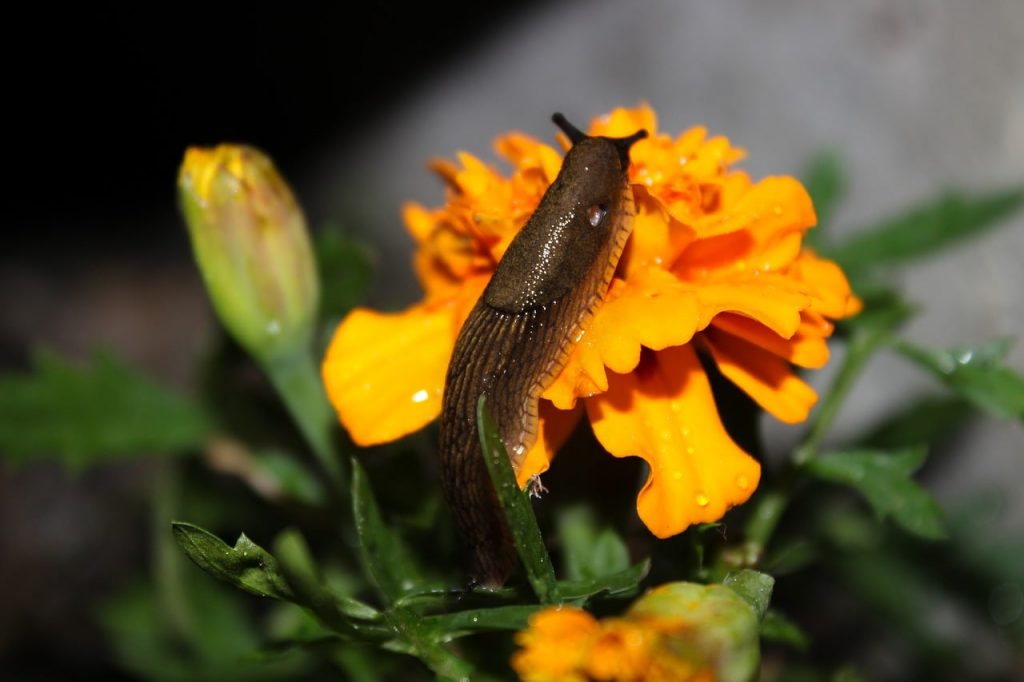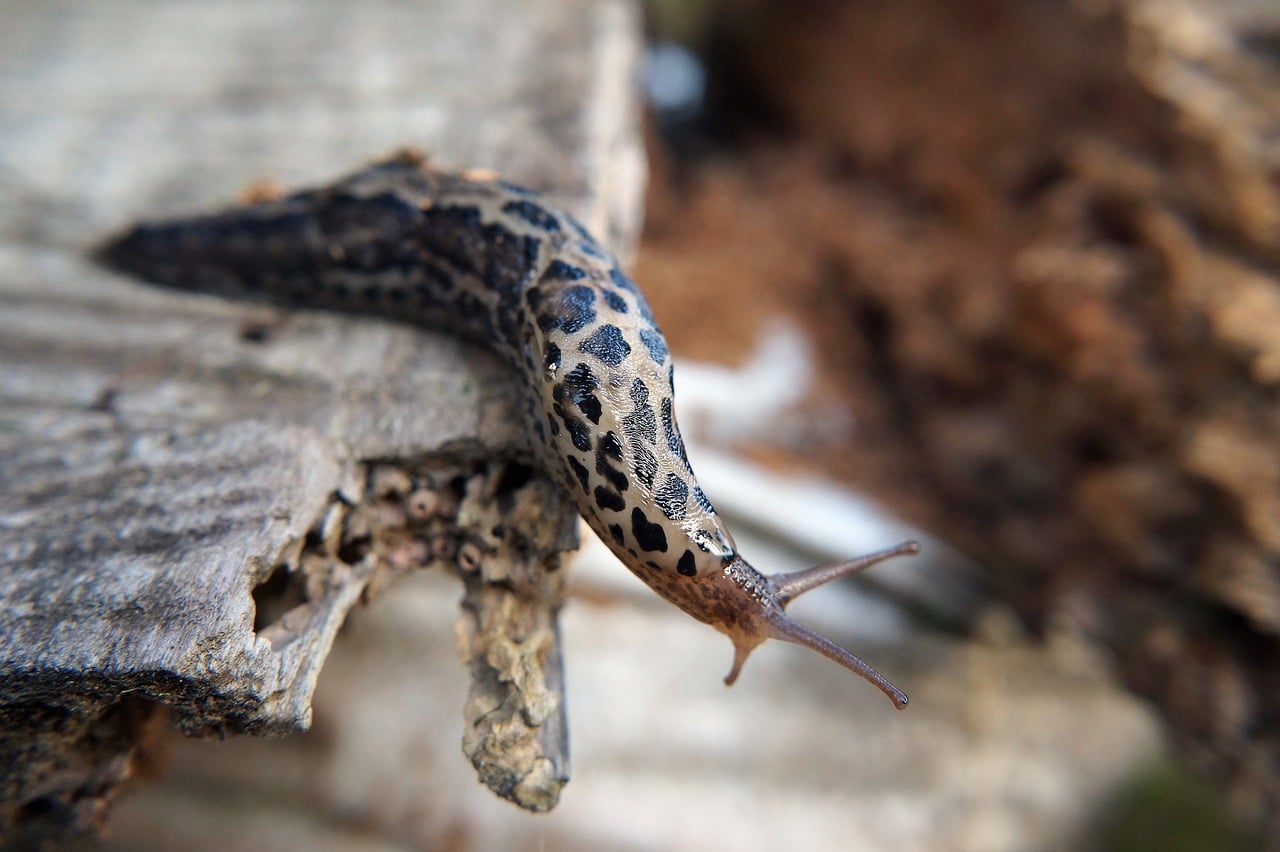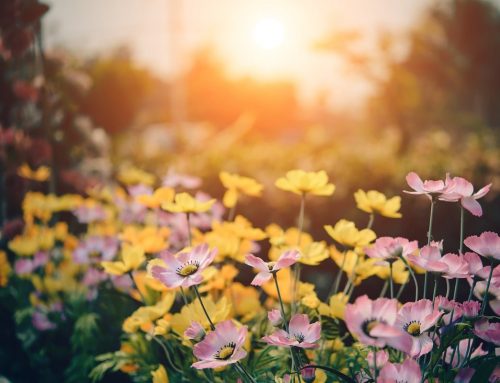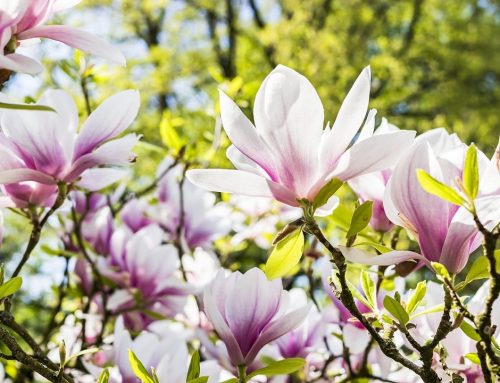At first glance, slugs don’t seem to be much of a threat to you or to any other living creature. You may even find their optic tentacles and slow ways adorable. But don’t let these cartoonish slowpokes fool you. Beneath that harmless appearance is a monstrous appetite that can raze your blooming garden in days.
If you see slugs in the garden, your plants could be in trouble. They are among the most destructive pests around and they can chomp down every leaf and fruit your precious garden has. Needless to say, you have to eliminate them before slugs sneakily take over your garden.
Before we talk about ways to get rid of these slimy, slithering gastropods, let us do a quick profile of this gardener’s nemesis.
What You Need to Know About Garden Slugs
Slugs are hermaphrodites; they can have both male and female reproductive systems. That means they can breed on their own. When they do, they produce up to 36 eggs several times a year.
They have a life span of two to six years and reach adulthood in about six weeks after hatching. One other notable thing about slugs is that they keep growing; some growing as tall as 10 inches. Imagine a slug bigger than your hands coming to feast on your garden every summer night.
The worst part about slugs is their insatiable appetite. They eat twice its body weight in a day and they feed under the cover of night. How can it eat so much in such a short span? We’re not sure who took the time to count but it’s said that slugs have 27,000 teeth.
Slugs thrive in dark, moist spots, too. They also hide their eggs under weeds. By knowing the places they call home, you’d know where to look once you proceed exterminating these garden pests.
 " data-srcset="/wp-content/uploads/2019/01/slug-in-the-garden-20x13.jpg 20w, /wp-content/uploads/2019/01/slug-in-the-garden-200x133.jpg 200w, /wp-content/uploads/2019/01/slug-in-the-garden-300x200.jpg 300w, /wp-content/uploads/2019/01/slug-in-the-garden-400x267.jpg 400w, /wp-content/uploads/2019/01/slug-in-the-garden-600x400.jpg 600w, /wp-content/uploads/2019/01/slug-in-the-garden-768x512.jpg 768w, /wp-content/uploads/2019/01/slug-in-the-garden-800x533.jpg 800w, /wp-content/uploads/2019/01/slug-in-the-garden-1024x682.jpg 1024w, /wp-content/uploads/2019/01/slug-in-the-garden-1200x800.jpg 1200w, /wp-content/uploads/2019/01/slug-in-the-garden.jpg 1280w" data-sizes="auto" data-orig-sizes="(max-width: 1024px) 100vw, 1024px" />
" data-srcset="/wp-content/uploads/2019/01/slug-in-the-garden-20x13.jpg 20w, /wp-content/uploads/2019/01/slug-in-the-garden-200x133.jpg 200w, /wp-content/uploads/2019/01/slug-in-the-garden-300x200.jpg 300w, /wp-content/uploads/2019/01/slug-in-the-garden-400x267.jpg 400w, /wp-content/uploads/2019/01/slug-in-the-garden-600x400.jpg 600w, /wp-content/uploads/2019/01/slug-in-the-garden-768x512.jpg 768w, /wp-content/uploads/2019/01/slug-in-the-garden-800x533.jpg 800w, /wp-content/uploads/2019/01/slug-in-the-garden-1024x682.jpg 1024w, /wp-content/uploads/2019/01/slug-in-the-garden-1200x800.jpg 1200w, /wp-content/uploads/2019/01/slug-in-the-garden.jpg 1280w" data-sizes="auto" data-orig-sizes="(max-width: 1024px) 100vw, 1024px" />4 Ways to Eliminate Slugs
There are various ways to keep slugs from destroying the garden you’ve lovingly tended. One of the most conventional ways to do it is hunting them.
Hunting and Traps
For small gardens, try using milk or beer traps. Place the traps near important plants since slugs can notice them only when they’re real close. To set this kind of trap, do the following:
- Bury a tall, deep cup in the soil.
- Expose a few inches of the rim above the soil so the trap won’t end up killing the beetles and bugs that hunt slugs.
- Fill the cup (not to the brim, though) with milk, beer, or a solution made of honey, yeast, and warm water.
- Replace after a couple of days.
The most preferred among those three concoctions is beer. In case you didn’t know, slugs love beer in the same way that moths are attracted to flame. And no, it isn’t because they’re alcoholics. They simply can’t resist the sweet smell of yeast in beer, which they often mistake for an overripe fruit.
If you’re no big fan of throwing away dead bodies and carcasses, you can lure slugs away from your home through humane traps. Set up flower pots, wooden planks, or cardboard boxes somewhere in your garden because slugs will naturally gather in the shady and moist areas these objects provide. To make them attract more slugs and snails, put moistened fruit rinds, cabbage leaves, and even pet food (preferably dry) under or inside the said items. Once snails and slugs gather in your traps, discard them far away from your home.
Finally, you can try hunting slugs at night. It might not be fun doing so, but it may become necessary especially when you’re dealing with a massive infestation. As your hunt starts, follow any slime trails you observe or check the underside of leaves. Of course, you need a headlamp and disposable gloves to make your hunt easier. If you don’t have one, you can always grab a good, old torch before you go skewering slugs. If skewering them with sticks isn’t your style, simply drop these pests in bucket of soapy water.
Natural Predators
When you don’t want to literally get your hands dirty hunting down slugs, you can always call for help from Mother Nature’s agents. Natural predators and biological agents like birds, beetles, and toads feed on slugs and their presence in your garden should help control the boom in the slug population.
Ground Beetles
These invertebrates feed on those pesky molluscs and you can purchase their larvae from a gardening store in your locale. Distribute the larvae throughout your garden in early spring and the ground beetles will emerge as adults to feed on slugs by summer. However, you need to encourage these beetles to stay in your garden. One way to do just that is to provide them dry refuge under grass, stones, or straw. This keeps them from getting eaten themselves, which should give the bugs plenty of reasons to stay where you can see them.
Toads
Give these a home in your garden and they’ll gladly eat slugs and other pests from your plants with gusto! If your mission is to attract wild toads, turn a pot or other containers upside down against a rock. This creates a dark hiding place that these critters love to inhabit. If you don’t have the luxury of time, you can always purchase toads and have them live in your garden. When you have cash to spare, you can add a small, decorative pond in your garden where toads and frogs and live in. Just don’t grow fish in the pond as they’ll gobble up the very tadpoles you’re raising to combat the resident slug army.
Birds
Chickens, jays, ducks, robins—these birds don’t mind having a slug for lunch! Indeed, birds are the biggest natural predators for slugs. Pick up slugs and feed them to visiting birds in the morning and they’ll soon be coming to your garden for more over time. That is if you’re not too squeamish. If you’re raising ducks or chickens, let them roam your garden from time to time so they’ll take care of any stray slugs trying to gobble up your garden blooms. If you’re not growing either bird species, you can encourage wild birds to build a nest near your garden by providing them shrubbery, hedges, bird baths, or bird feeders.
Slug Deterrents
The best way to keep slugs from assaulting your dainty little garden is to keep them at bay. Luckily, there are a couple of ways you can keep slugs from even thinking about going to your plant sanctuary.
- Keep the garden dry. To keep slugs at bay for most of the year, it may be best to keep your garden less damp. Doing so entails installing drip irrigation, mowing the lawn on a regular basis, watering plants early in the morning, and giving enough space between plants (to allow airflow between plants).
- Create mulch from specific plants. Oak leaf mulch or tobacco stem meal are some plant preparations that deter slugs to some extent. They should be spread as a barrier around plants. Just ask the gardening shop in your locale if they have either mulch available.
- Put up a barrier made from copper strips. What you probably don’t know is that copper repels snails and slugs. Form a barricade made of copper foil strips around your planting beds or plants and you’ll effectively keep them from munching on your prized garden vegetables! Ideally, the strips of copper foil should be wide enough that slugs can’t easily cross them with their slimy, flexible bodies.
- Grow plants that slugs hate. Because of their texture, taste, or toxins, slugs stay away from certain plant species. Examples of such slug-deterrent plants include vegetables (e.g. spring cabbage, broccoli, kale), herbs (e.g. garlic, mint, ginger, chicory, chives), and flowers like Viola, Digitalis (foxglove), Astilbe, Lobelia, Campanula, Phlox, Daylilies, and Bleeding Hearts. You can plant these as a barrier around your garden or near every other plant.
Chemical Pest Control
If the slug infestation is too great to remedy with DIY strategies, you’ll need to bring in the big guns. In this case, they come in the form of chemical treatment. However, use these with caution as some could affect beneficial insects or contaminate the waterways if you’re not too careful. Get professional advice before you proceed doing the following:
- Spread around iron phosphate pellets around your yard. You can readily buy the likes of Slug Magic, Sluggo, and Escar-Go in local garden centers and they can attract slugs to them. Once these garden pests consume these pellets, they’ll die within a week. Although deemed safe for most pets and edible plants, it’s still wise to use this option sparingly.
- Spray ammonia on slugs. Make a solution made of ammonia and water to create an instant slug-exterminating spray. Simply mix household ammonia with water and pour the concoction in a spray bottle. Spray the solution on slugs to kill them. However, don’t use the spray on your plants as the solution can burn leaves over time.
There may be nothing more alarming to a gardener than getting his or her realm invaded by slugs. With these tips, anyone tending a garden should be able to hold the fort before professional exterminators come and finish the job.

 " data-orig-src="/wp-content/uploads/2019/01/how-to-get-rid-of-garden-slugs.jpg" data-srcset="/wp-content/uploads/2019/01/how-to-get-rid-of-garden-slugs-200x133.jpg 200w, /wp-content/uploads/2019/01/how-to-get-rid-of-garden-slugs-400x266.jpg 400w, /wp-content/uploads/2019/01/how-to-get-rid-of-garden-slugs-600x399.jpg 600w, /wp-content/uploads/2019/01/how-to-get-rid-of-garden-slugs-800x533.jpg 800w, /wp-content/uploads/2019/01/how-to-get-rid-of-garden-slugs-1200x799.jpg 1200w, /wp-content/uploads/2019/01/how-to-get-rid-of-garden-slugs.jpg 1280w" data-sizes="auto" />
" data-orig-src="/wp-content/uploads/2019/01/how-to-get-rid-of-garden-slugs.jpg" data-srcset="/wp-content/uploads/2019/01/how-to-get-rid-of-garden-slugs-200x133.jpg 200w, /wp-content/uploads/2019/01/how-to-get-rid-of-garden-slugs-400x266.jpg 400w, /wp-content/uploads/2019/01/how-to-get-rid-of-garden-slugs-600x399.jpg 600w, /wp-content/uploads/2019/01/how-to-get-rid-of-garden-slugs-800x533.jpg 800w, /wp-content/uploads/2019/01/how-to-get-rid-of-garden-slugs-1200x799.jpg 1200w, /wp-content/uploads/2019/01/how-to-get-rid-of-garden-slugs.jpg 1280w" data-sizes="auto" /> 


